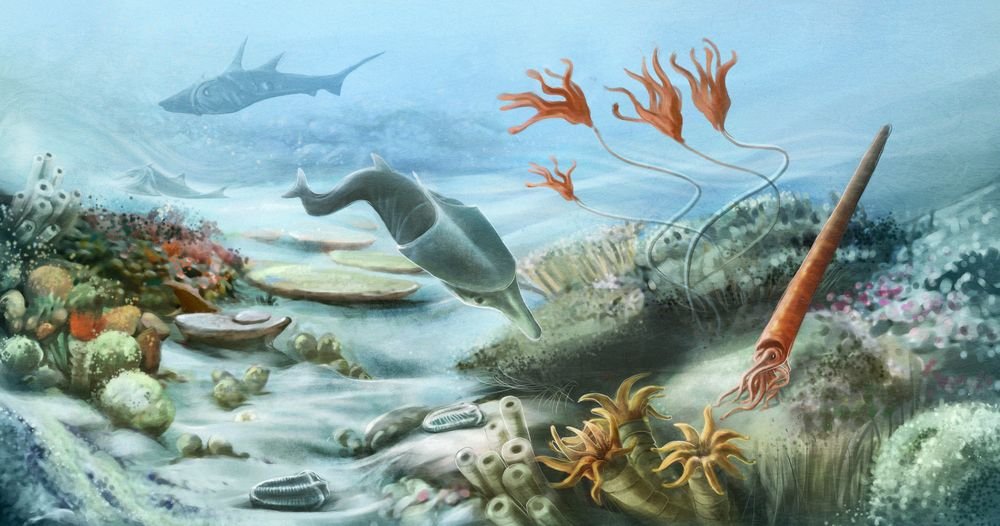[A TITANIC STORY]
1/17
The French Revolution was meant to end monarchy but ended up replacing one with another. Replaced KING Louis with EMPEROR Napoleon.
But Napoleon was no Louis. He wanted more than France. So proceeded to conquer all of Europe. Man wanted to be Alexander.
1/17
The French Revolution was meant to end monarchy but ended up replacing one with another. Replaced KING Louis with EMPEROR Napoleon.
But Napoleon was no Louis. He wanted more than France. So proceeded to conquer all of Europe. Man wanted to be Alexander.

2/17
Then Waterloo happened and “Alexander” died.
But the destitution that caused French Revolution also existed outside France. Take its Germanic neighbors, for instance. So there was a German Revolution, about 30 years after Napoleon.
Part of this mess was Bavaria.
Then Waterloo happened and “Alexander” died.
But the destitution that caused French Revolution also existed outside France. Take its Germanic neighbors, for instance. So there was a German Revolution, about 30 years after Napoleon.
Part of this mess was Bavaria.

3/17
And part of its casualty was German Jewry. Barely 4 years before the Revolution, a 26-year-old Prussian had published a paper titled “On the Jewish Question” in which he said, “the emancipation of the Jews is the emancipation of mankind from Judaism.”
His name, Karl Marx.


And part of its casualty was German Jewry. Barely 4 years before the Revolution, a 26-year-old Prussian had published a paper titled “On the Jewish Question” in which he said, “the emancipation of the Jews is the emancipation of mankind from Judaism.”
His name, Karl Marx.


4/17
Being stereotyped as wealthy isn’t terribly healthy in times of Revolutions. The fresh wave of antisemitism that started in 1848 drove many Jews out of Europe to a land of promise on the other side of the Atlantic.
Among them was one Lazarus Straus from Bavaria.
Being stereotyped as wealthy isn’t terribly healthy in times of Revolutions. The fresh wave of antisemitism that started in 1848 drove many Jews out of Europe to a land of promise on the other side of the Atlantic.
Among them was one Lazarus Straus from Bavaria.

5/17
Lazarus left behind a large family to seek out a new life in the New World. He spent two years in hard labor, first as a pushcart peddler, then as a dry-goods storekeeper in Georgia.
Once he was comfortable enough, Lazarus called for his family which included Isidor.
Lazarus left behind a large family to seek out a new life in the New World. He spent two years in hard labor, first as a pushcart peddler, then as a dry-goods storekeeper in Georgia.
Once he was comfortable enough, Lazarus called for his family which included Isidor.
6/17
Isidor Straus was his eldest, only 9 at the time of arrival. The boy was keen on joining the military and almost got into West Point, but everything fell apart as the Civil War broke out.
He did get into the Confederate Army, though, but couldn’t serve for being underage.
Isidor Straus was his eldest, only 9 at the time of arrival. The boy was keen on joining the military and almost got into West Point, but everything fell apart as the Civil War broke out.
He did get into the Confederate Army, though, but couldn’t serve for being underage.

7/17
The family had moved to Columbus during the Civil War but after the city burned down in the fighting, they had to move again. This time, they headed to New York where Lazarus met Quaker named Rowland Macy. Macy ran a dry goods store on Sixth Avenue named R. H. Macy & Co.


The family had moved to Columbus during the Civil War but after the city burned down in the fighting, they had to move again. This time, they headed to New York where Lazarus met Quaker named Rowland Macy. Macy ran a dry goods store on Sixth Avenue named R. H. Macy & Co.


8/17
Lazarus wanted to sell porcelain and glassware from China, but had no place to put up a store. So he convinced Macy to rent him in the basement. He named it L. Straus & Sons.
Both businesses did well and prospered.
Then Macy died. But Macy’s continued to prosper.
Lazarus wanted to sell porcelain and glassware from China, but had no place to put up a store. So he convinced Macy to rent him in the basement. He named it L. Straus & Sons.
Both businesses did well and prospered.
Then Macy died. But Macy’s continued to prosper.

9/17
In 1880, Isidor and his wife had their 5th child, a girl. They named her Minnie. L. Straus & Sons kept doing good business. By the time Minnie was 4, the Strauses had acquired a partnership into their landlords’ store. By the time she was 16, they’d acquired it whole.
In 1880, Isidor and his wife had their 5th child, a girl. They named her Minnie. L. Straus & Sons kept doing good business. By the time Minnie was 4, the Strauses had acquired a partnership into their landlords’ store. By the time she was 16, they’d acquired it whole.
10/17
Lazarus passed away two years later. By this point, the Straus family was already among America’s wealthiest and rubbed shoulders with the Vanderbilts, Rockefellers, and Lehmans. Isidor even got to serve as a US Congressman for a year on a Democratic Party ticket.
Lazarus passed away two years later. By this point, the Straus family was already among America’s wealthiest and rubbed shoulders with the Vanderbilts, Rockefellers, and Lehmans. Isidor even got to serve as a US Congressman for a year on a Democratic Party ticket.
11/17
In 1904, at the age of 24, Minnie Straus married a fellow New Yorker named Richard Weil. He was a cancer researcher and member of the medical staff at Manhattan’s German Hospital (now named Lenox Hill Hospital). Dr. Weil would go on to pioneer the idea of blood banks.
In 1904, at the age of 24, Minnie Straus married a fellow New Yorker named Richard Weil. He was a cancer researcher and member of the medical staff at Manhattan’s German Hospital (now named Lenox Hill Hospital). Dr. Weil would go on to pioneer the idea of blood banks.

12/17
Three years into marriage, the Weils had their first boy; they named him the same as the father, Richard Weil, Jr. They already had a girl the year before and would go on to have two more sons, one of whom died in infancy. Minnie and Richard kept out of Macy’s.
Three years into marriage, the Weils had their first boy; they named him the same as the father, Richard Weil, Jr. They already had a girl the year before and would go on to have two more sons, one of whom died in infancy. Minnie and Richard kept out of Macy’s.
13/17
Then came 1911. Isidor and his wife traveled to Europe on a winter vacation. There were no transatlantic flights those days, so it was a good old sea voyage.
It was the same for the return trip the following April. Only one problem…
The return was aboard Titanic.
Then came 1911. Isidor and his wife traveled to Europe on a winter vacation. There were no transatlantic flights those days, so it was a good old sea voyage.
It was the same for the return trip the following April. Only one problem…
The return was aboard Titanic.

14/17
The couple never made it despite being eligible for preferential rescue. Isidor declined lifeboat in favor of children. His wife declined because she wouldn’t leave her husband’s side.
The couple was last seen holding hands on the deck as the ship went down.
The couple never made it despite being eligible for preferential rescue. Isidor declined lifeboat in favor of children. His wife declined because she wouldn’t leave her husband’s side.
The couple was last seen holding hands on the deck as the ship went down.
15/17
Ida’s body was never found. Isidor’s was after 15 days. Richard Weil, Jr., their grandson, was just 4 then. He would go on to join his late grandfather’s business and become its President.
Richard Weil, Jr. would later have a son whom he’d name Richard Weil III.
Ida’s body was never found. Isidor’s was after 15 days. Richard Weil, Jr., their grandson, was just 4 then. He would go on to join his late grandfather’s business and become its President.
Richard Weil, Jr. would later have a son whom he’d name Richard Weil III.
16/17
Weil III became a doctor and had several kids, among them a girl named Wendy Hollings Weil.
And when Wendy grew up, she married a wealthy West Coast business scion named Richard Stockton Rush III.


Weil III became a doctor and had several kids, among them a girl named Wendy Hollings Weil.
And when Wendy grew up, she married a wealthy West Coast business scion named Richard Stockton Rush III.


17/17
If the name rings a bell, that’s because he just died exploring the wreckage of the ship that killed his wife’s great-great grandfather a little over a hundred years ago.
If the name rings a bell, that’s because he just died exploring the wreckage of the ship that killed his wife’s great-great grandfather a little over a hundred years ago.

• • •
Missing some Tweet in this thread? You can try to
force a refresh














